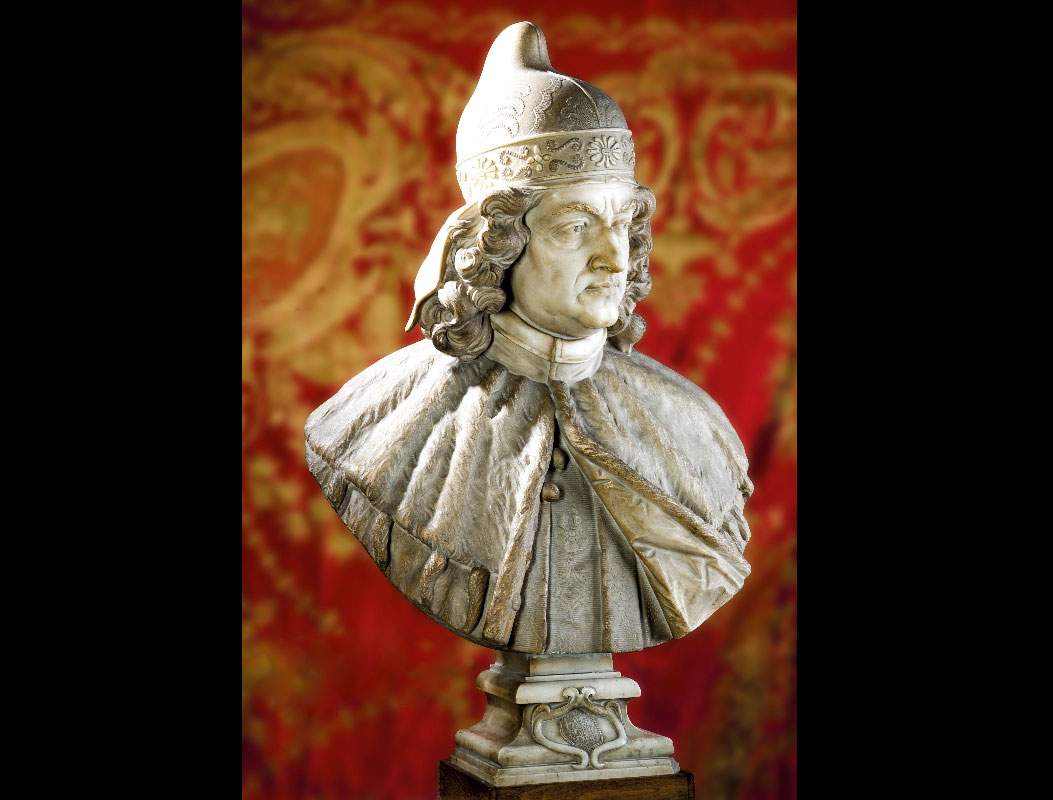An important gesture by a group of Venetian entrepreneurs who purchased at auction a marble bust of Doge Giovanni II Cornaro, or Corner (Venice, 1647 - 1722) and donated it to the Veneto Region. The work had disappeared in the 19th century from Ca’ Corner in San Polo and traces of it had been lost. Reappearing on the antiques market, it was handed over to the Region by entrepreneur Marco Michielli, the Venetian Hoteliers Association through its president Vittorio Bonacini, and the Committee for the Recovery of the bust, represented by Professor Antonio Scipioni, after it was acquired following an auction, which was held at the Eurantico house in Viterbo last June 24. The bust started from a base of 18,000 euros and was awarded for the sum of 36,000 euros. It will now remain on display at Palazzo Balbi, headquarters of the Veneto regional government.
The work, which can be dated to the early 18th century and came out of the workshop of the Bonazza family of sculptors active in Venice for two centuries, depicts the Venetian nobleman who was elected the 101st doge on May 22, 1709, on the first ballot, with 40 votes out of 41 votant. “The high quality of execution,” wrote Dino Levorato in the bust’s entry in the auction catalog, “is what makes this marble portrait a masterpiece of early 18th-century Venetian sculpture. The impalpable and virtuosic relief of the brocades of his robes sewn with precious Venetian fabrics and that of the gold embroidery on the doge’s horn, or more rightly, on the camauro, denounce his wealth and royalty. The marble face is vivified and ennobled by the skillful shattering of light. Virtuosities obtained with a portrait technique of the highest Bernini school brought to Venice by Juste Le Court thanks to the commission for the tomb of another Corner: Caterino, who died heroically and was buried at his wish in the saint’s basilica in Padua. And it is among one of these sculptors that the author of this work should be sought. From his highly gifted pupil of German origin Heinrich Meyring Italianized Enrico Meringo are recognized stylistic similarities confirmed with works such as the statuary of the high altar of San Moisè, the statuary at Santa Maria del Giglio and another for the Pisani family at the Villa di Stra these in collaboration with another highly gifted pupil of Le Court, Giovanni Bonazza.” According to Levorato, it is in this atelier, or that of the aforementioned Enrico Meringo, that the sculptor could be identified.
Doge Giovanni II Corner ruled the Serenissima from May 22, 1709 to August 12, 1722. He was the protagonist of the victorious war of Corfu against the Turks in 1716, the last great victory of the secular Republic to celebrate which Antonio Vivaldi composed the celebrated Juditha Triumphans, for many the only true hymn of the Serenissima. His dogado is also remembered for formalizing the use of the wig in parade attire, also used by all his successors.
“Today an important piece of Venetian and Veneto history, after centuries, returns to the city for which it was intended and from which, in dark times, it was taken away,” said Luca Zaia, president of the Veneto Region. “Thanks to the sensitivity and love for culture of a group of Venetians, our entire community is reappropriating a precious testimony of the Serenissima, a common denominator in the traditions, cultural expressions and identity of all Venetians. On behalf of the entire region I express my gratitude for a true act of love. The work will remain on display at Palazzo Balbi and we pledge to never let it leave Venice again.”
Also present at the handover were the president of the Regional Council, the councillors for Heritage and Tourism, and several representatives of the VenetiNet association, which aims to spread Venetian history and has been working to save the prestigious sculpture. “In this gesture,” added Governor Zaia, “there is all that Venetian spirit that made the Serenissima model great in the past. Men and women of doing, who feel part of a community and choose to take action for it in the first person. Here, no one has thought of creating a movement of opinion or protest to make the institutions recover the work. There is, instead, a cordate in which everyone voluntarily and responsibly put their hand to their wallet so that everyone could regain a historic piece of their people’s lives. Thus, the bust testifies to an illustrious past but also to a present of high civic sense.”
Image: Bottega dei Bonazza, Bust of Doge Giovanni II Cornaro (18th century; marble, 96 x 79 cm; Venice, Palazzo Balbi). Photo G. Palozzi
 |
| Venice, entrepreneurs buy bust of Doge John II Corner and donate it to the region |
Warning: the translation into English of the original Italian article was created using automatic tools. We undertake to review all articles, but we do not guarantee the total absence of inaccuracies in the translation due to the program. You can find the original by clicking on the ITA button. If you find any mistake,please contact us.